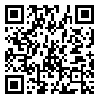2- in Ahwaz University of medical sciences, school of health, Department of Occupational Health Engineering, Ahwaz ,
3- in Occupational Health engineering, Ahwaz University of medical sciences, school of health, Department of Occupational Health Engineering, Ahwaz
Introduction: Investigation of accidents have shown that more than 90% of industrial accidents are related to human aspects. What is more, safe behaviors can not be institutionalized in industries by only using technical-engineering measures and enacting safety rules. Building a positive and effective safety culture can make individuals aware of hazards and consequently reduce accidents in the workplace.
.
Material and Method: In this analytical-descriptive study, a standardized safety culture questionnaire was used. The questionnaire comprised of 40 question including five dimensions of: training, work environment, safety priority, information exchanges and management commitment. In this regard, the questionnaire was distributed among personnel of three laboratories in a petrochemical company. Five point Likert scale was for recording the responses.
.
Result: The mean score for safety culture was 136.7 for laboratory personnel which was considered positive according to the presented definition. In this sense, safety priority and management commitment with score of 31.9 and 25.2 obtained respectively the dimensions of safety culture.
.
Conclusion: Strong and positive safety culture among laboratory personnel would prevent incidence of many occupational accidents. In another word, it would help organizations to facilitate access to higher standards.
Received: 2014/04/29 | Accepted: 2014/04/29 | Published: 2014/04/29
| Rights and permissions | |
 |
This work is licensed under a Creative Commons Attribution-NonCommercial 4.0 International License. |


